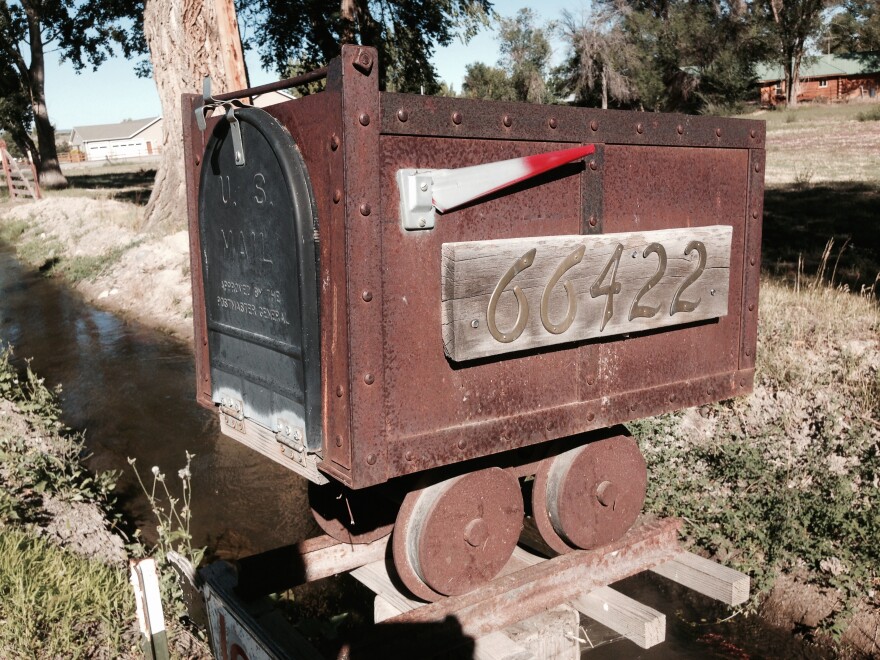This is Mike Strong, in Hays, for HPPR. e book is “How the Post Office Created America” by Winifred Gallagher.
One of our most visible unnoticed most ubiquitous features of daily life was the result of the US Post Office solving a need and being sensitive to feelings. House numbers. Free city delivery by postal carriers to addresses. Much later, 1923, mailboxes on houses.
When the Civil War started, deliveries to individual addresses, was not yet a thing. Mail was sent to post offices and customers would come by to get their mail.
The great grandfather of actor Montgomery Clift, lawyer Montgomery Blair was appointed, by President Abraham Lincoln as postmaster, partly because the Blair family was instrumental in keeping both Maryland and Missouri in the Union. Montgomery Blair is described as conservative, brilliant, belligerent but, most important, practical. A man made to look at needs and to find solutions.
One of the first items was to repair the spoils system which had awarded many people with jobs in the postal system. Blair and Lincoln replaced 21,000 of the postal service’s 28,000 employees. That was 75%, or three workers out of every four.
By 1860 changes were needed. One of the ideas to relieve congestion at post offices, was delivering mail to residents in cities. Until then, the cost was considered prohibitive. Inexpensive postage had the effect of increasing mail volume.
In the cities the people coming in to see whether they had any mail, meant congestion. Crowds. Think of mail call in a small military unit and then multiply the numbers.
The post office, starting in the 1850’s, tried to lower the customer numbers by opening branch offices in cities and by installing mailboxes on streets. But it wasn’t enough. There were still long lines of customers at General Delivery hoping for mail and usually going home without.
Individual entrepreneurs saw an opportunity, getting around postal monopoly laws, and for 1 or 2 cents would bring a letter from a private residence to a post office. The term “penny post” originally referred to these private letter carriers.
For years, the concept of “Free City Delivery” had been batted around but not acted on. In the Civil War, death notices came in the mail along with bundles of returned mail which had been sent to the now imprisoned or dead soldier.
In Cleveland, postal clerk Joseph Briggs was agonized over handing these notices to families and in particular to families within the setting of crowds. Briggs thought such personal heartbreak should be handled privately.
So, in the winter of 1862, Cleveland postal clerk, Joseph Briggs persuaded his bosses to try an experiment. That winter, 1862, Cleveland began to deliver mail free of charge to residents. That experiment attracted the attention of Montgomery Blair who, free of Southern opposition to the expenditure, was able to find funds to hire postal carriers.
He was able to argue that in Britain this was already working because more convenient delivery encouraged more mail earning more revenue. Therefore, the added money to hire postal carriers would pay for itself. Convenience increased usage, increased money.
So, in 1863, the new Free City Delivery began. Cleveland postal clerk Joseph Briggs, who had gotten this going in his city, was brought to Washington, D.C. to help administer the program.
At first carriers handed the mail directly to customers. If no one was home, they would return until they finally were able to hand off the mail. Carriers walked an average of 20 miles a day, six days a week.
Communities who wanted this kind of mail service had to demonstrate that they had enough people, and that they had good sidewalks, that streets were named, and marked, and that houses and buildings were numbered.
Of course, now that addresses were numbers, mail volume increased. So did commercial mail and also fraud and get-rich-schemes. Blessings with curses.
So, the next time you look at street signs and the numbers on houses, reflect that these were the practical details needed for the mail to be delivered.
This is Mike Strong, in Hays, for HPPR Radio Readers Book Club.










